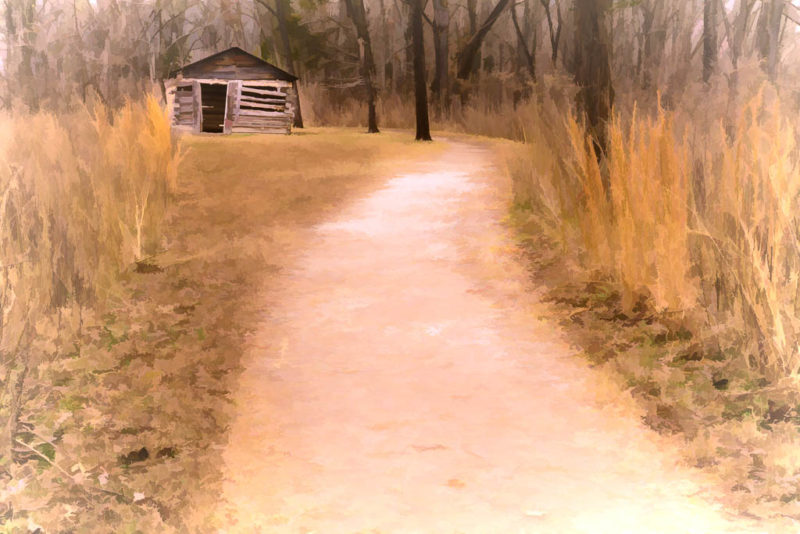With all the warm days we’ve had over the last few weeks, which is quite unusual for this time of year, I thought I would take a day off from work and make a trip to Tyler Bend on the Buffalo River to take some pictures. However, the weather that is more typical of late January and early February arrived with overcast skies, temperatures in the mid-30s, and windchills probably in the mid- to upper-20s. Considering the previous few days had highs in the upper-60s to mid-70s, the colder temperatures felt absolutely brutal. The nice thing about the situation was I had the entire place to myself since no one else was crazy enough to be outside.
One of the areas I wanted to photograph was the site of the old Collier homestead. In 1928, long before the Buffalo River became the country’s first national river, Solomon “Sod” Collier and his wife Ida Mae moved to the area from Kentucky. In 1937, after making the improvements required under the Homestead Act of 1862, the Colliers received title to the property through a federal land patent. The Colliers eventually sold the property, which was then used to raise cattle and grow hay. The house and other buildings had deteriorated significantly by the time the National Park Service purchased the land in 1978, but the Park Service restored the site and built a trail to the homestead. I spent about an hour and a half at the Collier homestead site and took a lot of pictures, but one of the scenes that caught my attention was a path that led to an old shed behind the main house.
One of the first compositional “rules” most photographers learn is the Rule of Thirds. The Rule, or more appropriately, the Guideline of Thirds is a technique in which a scene is divided into nine sections with two vertical and two horizontal lines. The idea is that the photograph is strongest when the subject, or subjects, is placed along either of the vertical or horizontal lines rather than right in the center. This is easy to do if your camera allows you to superimpose a grid in your viewfinder, as mine does. If your camera doesn’t have this feature, then just imagine a tic-tac-toe grid as you look through the camera. This technique can often create very pleasing compositions, but every situation is different, and the Rule of Thirds isn’t always the best approach to composing your photograph. But, when you know what the rule is, you also know when it is best to break it.
In this case, the Rule of Thirds worked very well. I positioned my camera so the path follows the right vertical line of the frame and creates a leading line that draws the eye to the old shed, which is positioned at the intersection of the left vertical and upper horizontal lines.
I had originally planned on processing this image as a black and white photograph to further enhance the feeling of timelessness. But, given the lighting conditions created by the heavy clouds, the conversion created tones that were very similar in value making it difficult to separate the grasses and trees from the shed. So, I converted the image to a digital painting, and I really like the final result.
Settings: Canon 5D Mk IV, 52mm, 1/20 sec, f/22

The Collier are my great grandparents I remember as a young child visiting. At the cabin great childhood memories
That’s quite interesting. I’m sure you have some wonderful stories.